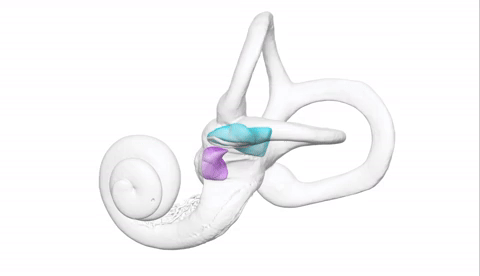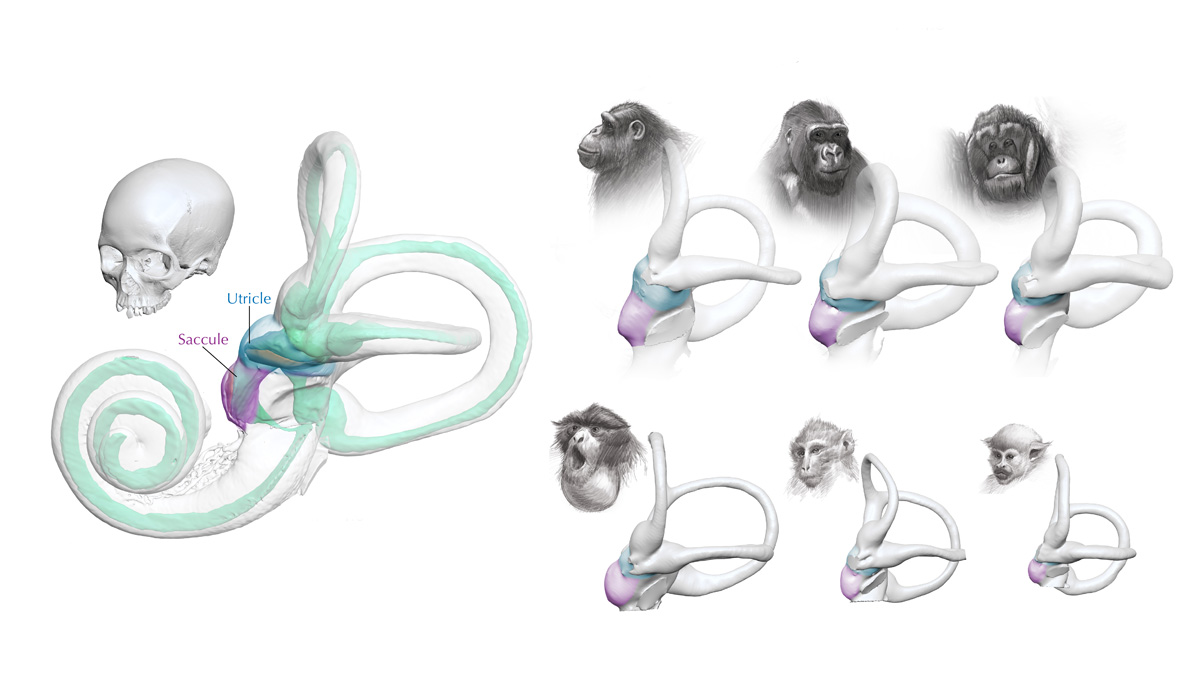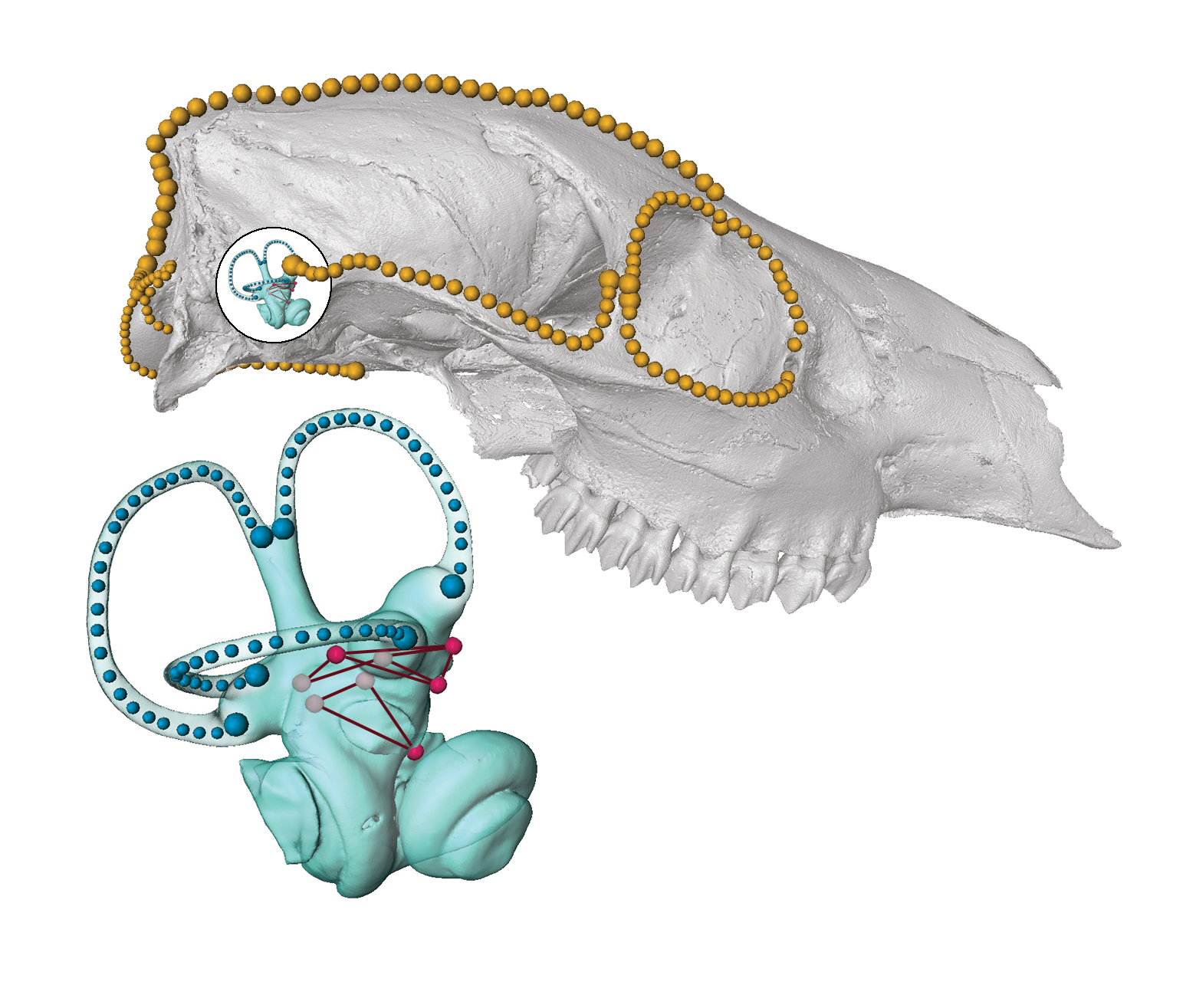The sensory organs of the inner ear are among the earliest innovations in vertebrate evolution and play a critical role in understanding vertebrate organismal biology. They are fundamental to our perception of gravity, movement, and sound. My research focuses on understanding major evolutionary transitions in vertebrate hearing and balance systems currently focused on primates and other mammals. My work revolves around three interconnected themes:
Functional morphology of the vertebrate membranous labyrinth
The endosseous (bony) labyrinth of the inner ear is often analyzed to infer the functional characteristics of its sensory organs, particularly in paleoecological studies. However, accurately reconstructing vestibulo-cochlear function using bony anatomy alone poses significant challenges. My research focuses on the comparative functional morphology of the membranous labyrinth to enhance our understanding of functional change in the inner ear throughout evolution. By integrating soft tissue imaging, digital visualization, and shape modeling techniques, we are able to gain new insight into the intricate and elusive structures of the membranous labyrinth.

A morphometric model of the human otolithic system constructed using a combination of spherical harmonic descriptors and landmark-based shape modeling. From Smith et al. (2023).
Evolution of the primate inner ear
Primates exhibit remarkable diversity in positional and vocalization behaviors, particularly within the hominoid clade, which includes apes and humans. However, reconstructing the evolutionary transitions of these behaviors is challenging, mainly due to the incomplete fossil record. My research approaches these problems through the lens of the inner ear, home to the sensory organs responsible for balance and hearing. Specifically, I am developing integrative methods for modeling the functional parameters of the primate otolithic organs, which are crucial for 3D spatial awareness and sensory integration within the ear. By doing so, we can gain better insights into the evolution of primate positional behavior and auditory capabilities.

Anthropoid vestibular morphology. The left image shows an anterolateral view of a left human inner ear. The membranous labyrinth is shown in green beneath a transparent bony labyrinth. The utricular (blue) and saccular (purple) regions of the vestibule are highlighted among great apes (right top row) and three species of other anthropoids (right bottom row). From Smith et al. 2024.
Sensory diversity and constraint in mammals
The vertebrate inner ear is often used in ecomorphological studies. However, labyrinth morphology may also be influenced by other factors, such as cranial shape. My research seeks to deepen our understanding of the constraints that shape the diversity of sensory systems in mammals. Specifically, I am interested in the interconnection between cranial evolution and the various sensory structures of the inner ear—such as the canals, otolithic organs, and cochlea—as well as interactions between the ear and other sensory systems like vision.

